North West Metro — Connecting communities and building for the future
By Andrew Carruthers, End Market Director – Infrastructure & Environment, Asia Pacific & Project Director of AECOM’s Sydney Metro North West ERSA Technical Advisor Team
Sydney has just opened Australia’s first-ever driverless metro rail project ― the North West Metro, which was successfully completed on schedule and, importantly, under budget. The suburbs in North West Sydney have some of the highest rates of car ownership per household in NSW, perhaps due to the lack of a reliable and viable transport alternative. In addition, over the coming decades the region is expected to absorb an extra 200,000 people, boosting the population to above 600,000. That is twice the size of Canberra.

The North West Metro provides eight new railway stations and 4,000 commuter car parking spaces to this fast-growing region. Five existing stations were converted to accommodate the metro along the former Epping to Chatswood Rail Link.
North West Metro runs for 36 km and connects Rouse Hill in the North West with Chatswood just 10 km north of the CBD. From the North West, metro rail is being extended under the harbour, through new CBD stations and beyond to Bankstown.
From 2011, AECOM, with partners WSP, Architects COX and Grimshaw, was the Technical Advisor for the Engineering, Rail Systems and Architecture (ERSA). The team undertook necessary design works to produce a concept design, reference design and contractual documentation for the project.
Under separate contracts, AECOM was also engaged to provide environmental assessments and planning approvals, and to undertake Operations, Trains and Systems (OTS) Works Technical Requirements Management.
As Sydney Metro’s technical advisor on the North West Metro, AECOM played a key role in helping to plan and design the project, assisting to set out many of the parameters that would enable the project team to achieve its critical customer, budgetary and delivery goals.
Innovative design with customer and community focus
With an experienced and enthusiastic multi-disciplinary team, AECOM, with partner WSP, tested engineering, urban design and architectural outcomes that assisted with achieving project cost savings and enhanced the customer experience. In collaboration with Sydney Metro, AECOM’s value-engineered solutions considered the requirements of all stakeholders, including operators, customers and the local community, while also reflecting safety in design and work health and safety practices.
An example of AECOM’s contribution to value-engineering was supporting the planning and design process for Sydney Metro’s change from a ‘cut and cover’ and ‘bored’ tunnel between Bella Vista and Rouse Hill, to a ‘Skytrain’ viaduct. This resulted in significant cost savings, which enabled two new stations to be added to the project, while also providing new urban realm and amenity. This option also resulted in far less disruption to motorists during the construction period.
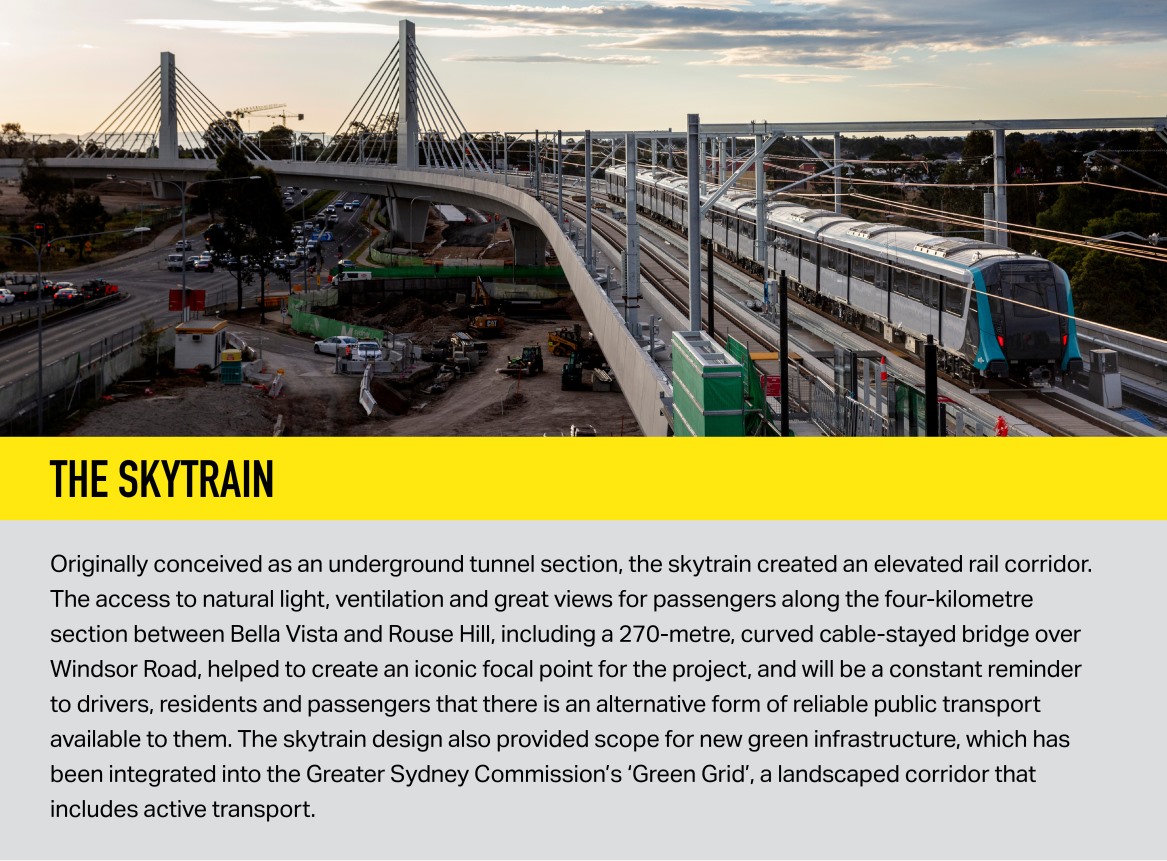
The scale of the project and critical procurement milestones also necessitated an innovative environmental planning assessment and approvals pathway. The approach tested and validated changes to the NSW planning process and provided a benchmark for future infrastructure projects. Working as part of a collaborative team with Sydney Metro and various technical experts, AECOM helped to develop a new method of presenting environmental mitigation and management measures, which has now been adopted as the industry benchmark in NSW.
The project also had to be future ready and delivered in the context of Sydney’s unique urban character, responding to the city’s growth, which has created a multitude of mini-cities and employment areas.
In line with the Greater Sydney Commission’s vision for a metropolis of three cites, a key Sydney Metro objective is to enable smooth and efficient transit between existing and future residential and employment zones. At the same time, it will be a critical transit backbone to support future planned development. Unlike many other international metro projects, it wasn’t solely about funnelling more people directly in and out of one central business district.
This required a unique approach to designing the metro stations to ensure they were respectful of the existing environment, but also adaptable enough to embrace future development over the next 30 to 50 years.

When Sydney Metro City & Southwest is complete, Sydney will have 31 metro stations and a 66 km, fully accessible metro system providing commuters with a train every four minutes in each direction.
Building on the successful client-side technical advisor role on the North West Metro, AECOM is now providing advice on Sydney Metro West.
Dynamic planning process
Another key challenge for any future metro is the planning and approvals process that requires engagement with many stakeholders along the proposed route, including the residents and businesses who have to contend with the disruption during the construction phase.
A project on the scale of the North West Metro had not been attempted in Australia for a generation, so it was also a chance to implement a more-dynamic approach to planning assessment and approvals, while hitting critical procurement milestones.
The approach both tested and validated recent amendments to the NSW planning process. It has since been used as a benchmark for upcoming metro projects.
The staged approval process supported by an AECOM-led consortium separated the environmental assessment of heavy construction work from the station design and railway operations, which allowed:
- the overall project to be delivered more quickly and efficiently
- a thorough assessment of both stages of the project, with each Environmental Impact Statement (EIS) able to focus on the critical issues of each stage
- the project team to seek approval to start building the tunnels early ― and getting on with the major construction challenges as soon as possible
- more time to discuss with the community and government agencies the planning and design of railway station surrounds — areas that will become the focal points of suburbs for generations to come.
Significant collaboration was required between government agencies, planning professionals and stakeholders to produce the required EIS, including the formation of a dynamic planning approvals consortium from the private sector, the creation of inter-agency working groups and delivery through an integrated Sydney Metro team.
Sydney Metro is an enormous undertaking for the city, but an essential one if the enviable lifestyle that residents enjoy today is going to be a legacy for future Sydneysiders. Our focus on ‘customer-centered design’ ensured that a customer’s door-to-door journey was at the heart of the new metro’s design. Creating safe, sociable and functional precincts was a vital part of that journey.
As demonstrated with the Jubilee Line in London’s east or Hong Kong’s various MRT extensions, the transformative nature of a new metro line can take many years to be realised, but by completing the first North West Metro, Sydney is well on the way.
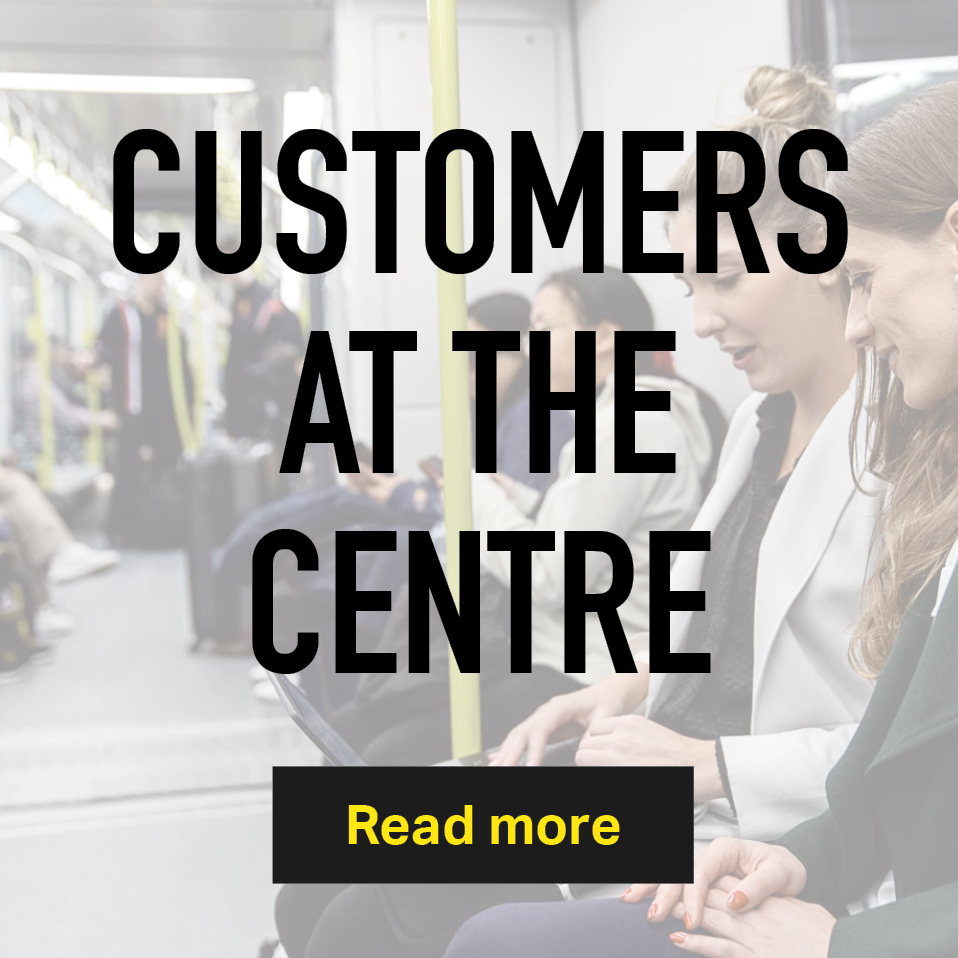 |
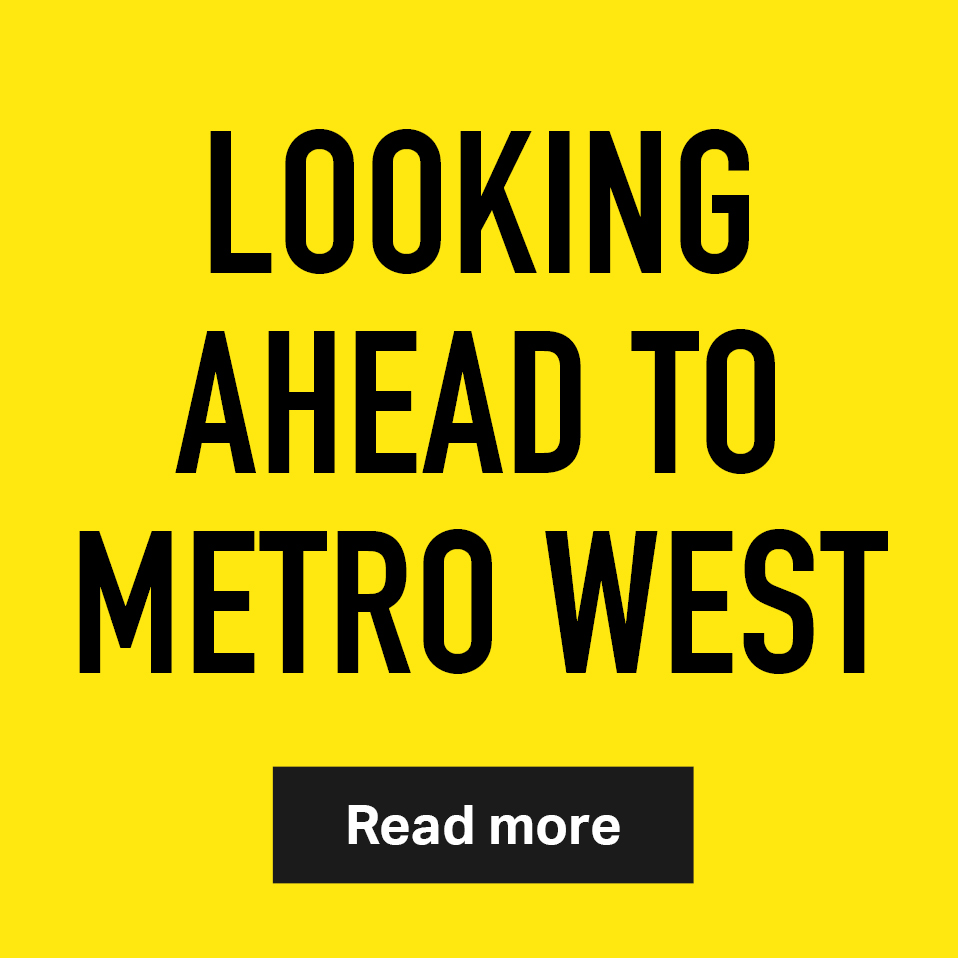 |
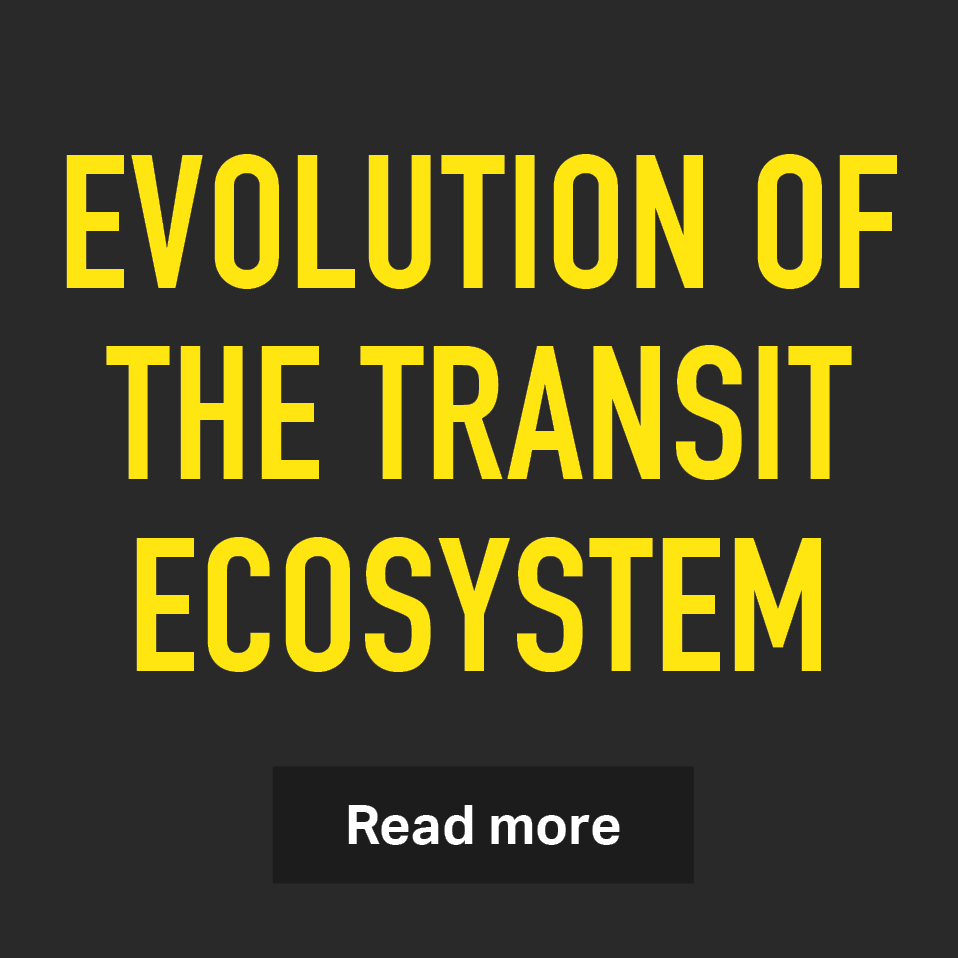 |
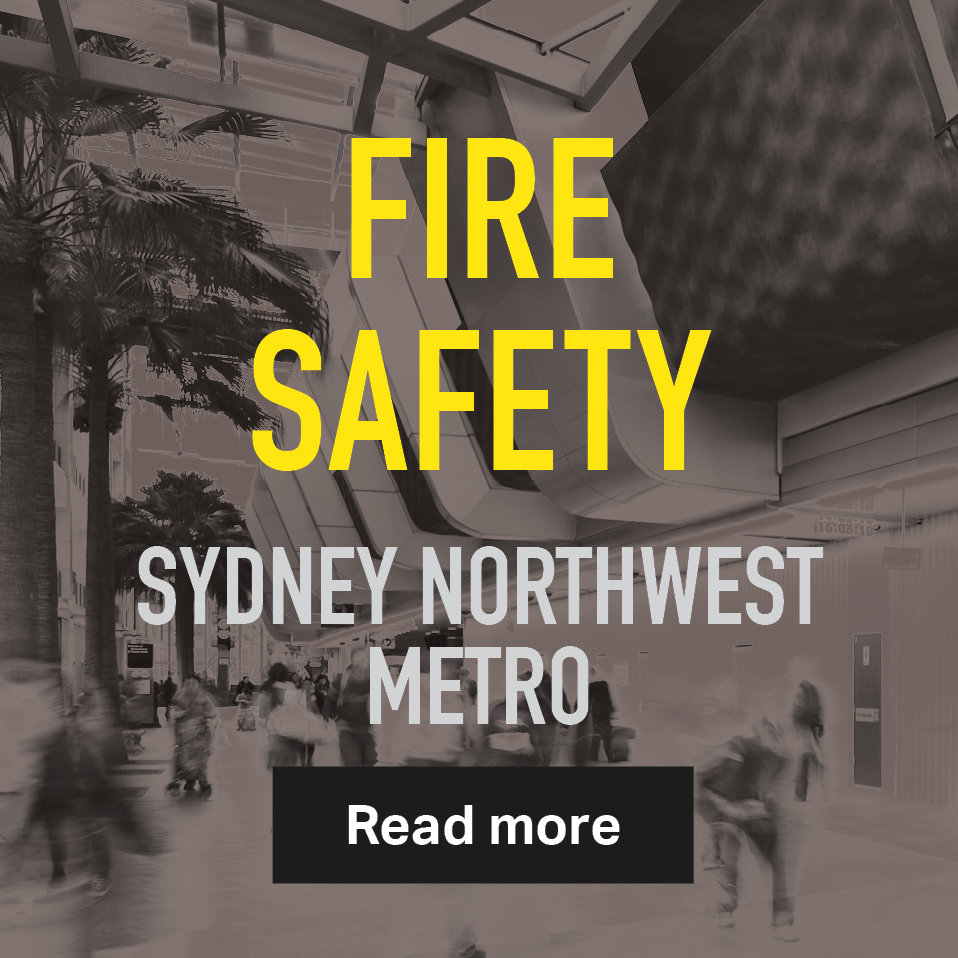 |
